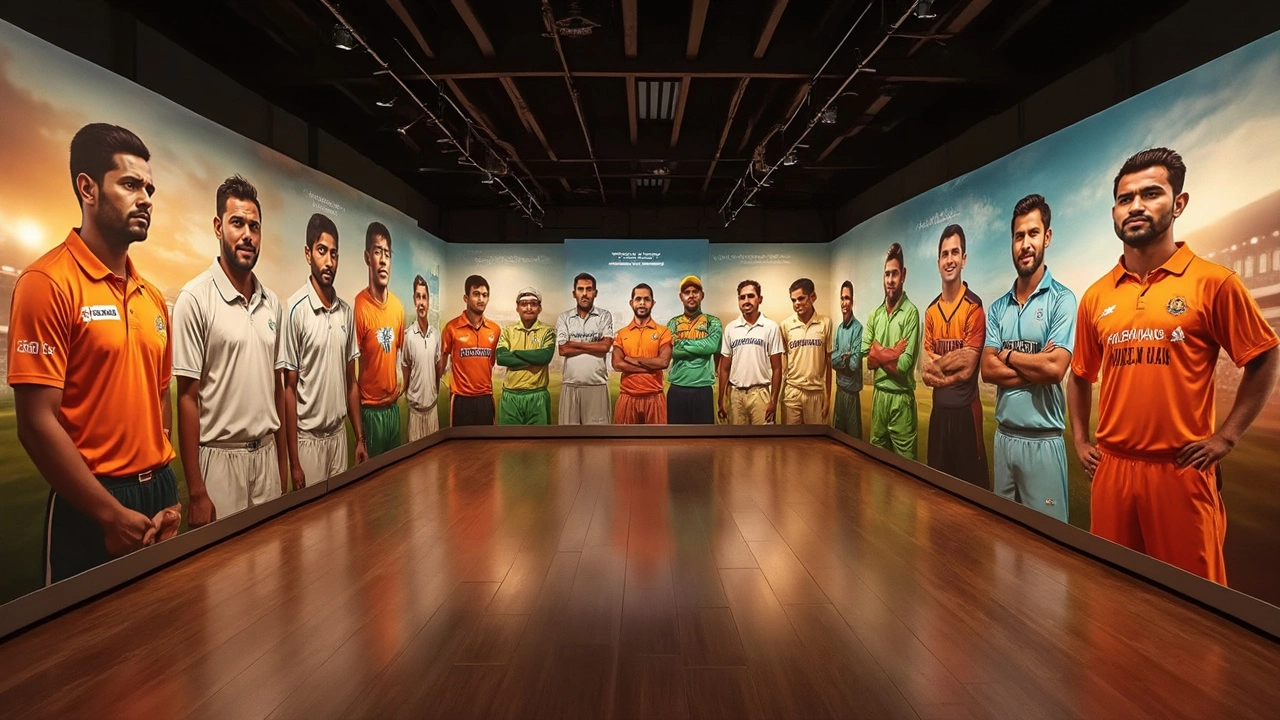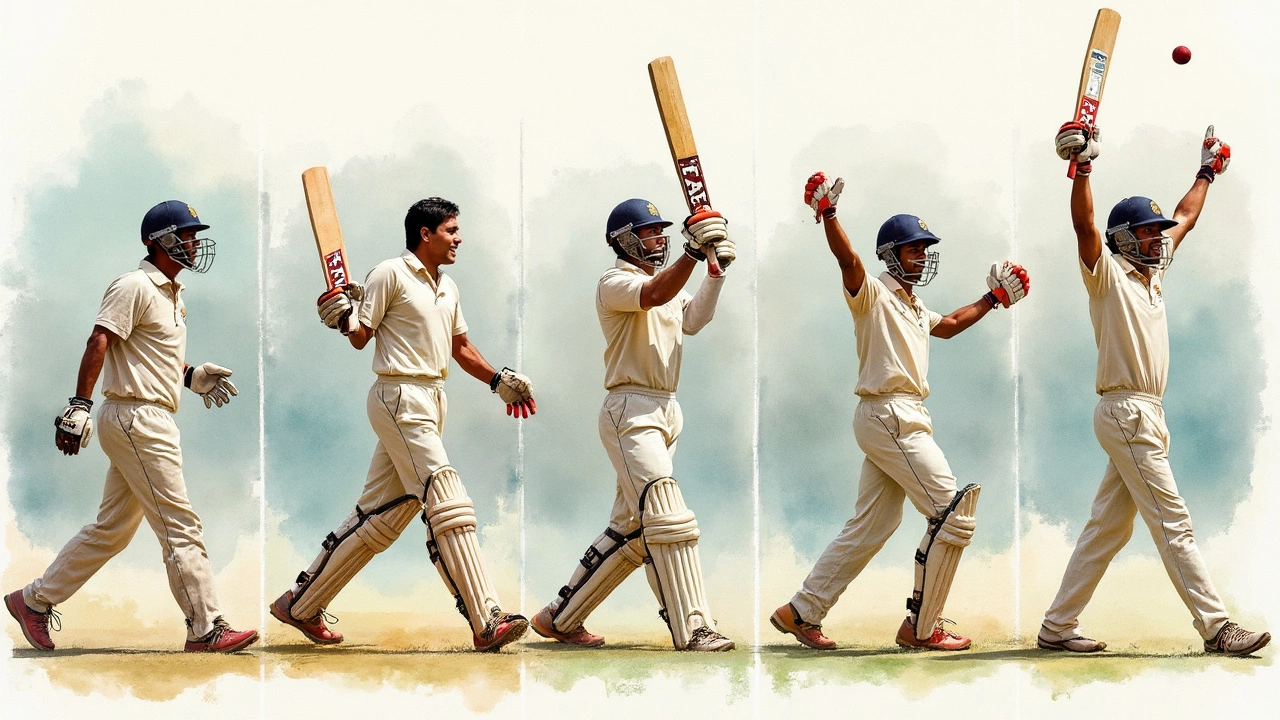Longest Career Sports: Which Athletic Fields Offer Most Longevity?
 Jul, 2 2025
Jul, 2 2025
Think of your favorite athlete. Picture them playing at their peak for 20, maybe even 30 years. Sounds unreal, right? Yet in some sports, that’s more common than you’d imagine. Athletic careers can feel like a sudden snap—one injury, one unlucky play, and it’s game over. But in a few surprising sports, the story’s different. There are athletes who keep going far beyond the usual retirement age, racking up decades instead of seasons. The real shock isn’t just longest sports career records—it’s the sports where old dogs keep running the game long after everyone else has thrown in the towel. You might have a guess which sport lets you stick around the longest, but chances are, the answer will throw you a curveball (and no, it’s not just golf!).
The Surprising Kings of Longevity in Sports
When most people think of athletic careers, images of battered bodies and quick retirements come to mind. Soccer? By their mid-30s, most pros are packing up. Football? Retirement before 35 is the rule, not the exception. But there’s a secret club of sports where experience not only matters—it actually beats youth most of the time.
Let’s break down the numbers. Take golf: Tiger Woods is pushing 50 and, despite some wild injuries, he's still a tournament threat. The average pro golfer on the PGA Tour keeps at it into their late 40s or early 50s. That’s already impressive, but not quite the record-holder. Then there’s baseball, the classic American pastime. Players like Nolan Ryan tossed fastballs until 46. Julio Franco played in the MLB till he was 49. Not bad, but even these legends pale next to some lesser-known heroes in other leagues.
How about tennis? You see teens breaking through once in a while, but most pros hang up their rackets around 33. Yet, doubles players occasionally nudge past 40. It’s good, but not breath-taking. Table tennis is a similar story—quick reflexes start to go in your 30s, but hard-training veterans can keep winning well into their 40s.
Here’s where things get wild: equestrian events and shooting sports. Show jumping, dressage, and eventing aren’t about brute strength or outlasting a sprint. They demand technical skill, experience, and almost a kind of patience you only get with age. Equestrian athletes regularly compete into their 50s, and sometimes their 60s and beyond. In the Tokyo 2020 Olympics, Australian equestrian Mary Hanna competed at age 66. In 2016, she was 61—and that wasn’t even her last Games.
Shooting ups the ante. At the Olympic level, shooters regularly clock careers that last 30-plus years. Oscar Swahn, a Swedish shooter, competed in the Olympics at age 72. Not a typo. Shooting is low-impact, all about precision, calm under pressure, and steely nerves. Age isn’t a barrier — if anything, wisdom helps you aim better.
Want another surprise? Curling. It draws relatively little fanfare, but those who play at a high level often stay elite deep into their 40s—and some push 50 or past. Strategy and experience are more important than pure physical prowess.
The champions of genuine longevity, though, are bowlers, snooker players, chess grandmasters (which, yes, is considered a sport by the International Olympic Committee), and especially ultra-marathoners in the masters categories. In bowling and snooker, world-class competitors in their late 40s and 50s are no big deal. If you look at official records, 63-year-old Norm Duke nearly made the PBA Tour finals in bowling in 2022. Steve Davis, the snooker icon, played professional snooker matches into his late 50s—and nearly pulled off some huge upsets against younger contenders.
What sets these sports apart? It’s not just low rates of injury. They reward patience, experience, and mental endurance more than pure physical attributes. The body ages, but the mind—that’s where these legends cash in.

The Factors That Keep Careers Going Strong
It’s easy to assume that ‘easy on the body’ is the whole story, but there’s more to it. Injuries are a massive factor. Think of football or hockey: bone-crunching tackles and collisions cut most careers short. In sports requiring hyper-explosive movements (like sprinting or American football), the body simply can’t recover as fast with age. Ligaments get weaker, muscles lose bounce. Even with treatment and rehab advances, some sports just chew up bodies faster.
But in sports like golf, shooting, bowling, or curling, the strain is different. They put less wear and tear on the joints. Training can be very specific and more about repetition, nuance, and learning, rather than punishing the cardiovascular system or demanding endless sprint bursts.
Mental edge quietly changes everything too. In shooting, archery, curling, and billiards, the pressure can unravel you, no matter how physically fit you are. Older athletes train their minds to handle high-stakes moments way better than someone with just a few seasons under their belt.
Another big one? Adaptability. If you can adjust your playing style, you can prolong your career dramatically. Roger Federer, for example, mastered the art of shortening points and conserving energy during the tail end of his tennis career. In baseball, crafty pitchers shift their game as their fastball slows down, learning new pitches to fool hitters. Savvy golfers adapt their swing to aging bodies and changing course conditions.
There’s also how the sports culture itself handles aging. Baseball and tennis have ‘veteran-friendly’ circuits. Golf and bowling have senior tours designed for longevity. Equestrian competitions often value life-long mastery, and in shooting, you’re never too old for another round. The support systems and specialized training for older athletes give them real frameworks to stay in the game.
Money and motivation matter, too. If the sport pays well or has passionate amateur circuits, people have incentives to outlast their peers. Golfers have the Champions Tour. Bowlers can play masters events for decades. Chess grandmasters hustle through tournaments for a lifetime.
But even in these ‘long-career’ sports, it’s not all smooth sailing into your 50s and 60s. Injuries can still sneak up. Overuse issues, arthritis, and mental burnout creep in. Pro golfers end up with sore backs, and even shooters complain about shoulder pain after decades of repetition. Staying at the top demands constant discipline and smart, evolving routines.

Tips for Building a Long Athletic Career
If you dream of outlasting the competition, you have to play the long game—literally. The first move is picking a sport where age is less of a barrier. If your heart beats for sports like football or basketball, your window is shorter. But if you want to stay competitive as the birthdays rack up, look at golf, bowling, shooting, archery, equestrian events, and less-impactful sports that let you trade speed for finesse.
Training smart is the main theme. A marathon of a career isn’t built on constant grind—rest, recovery, and adaptability mean everything. Don’t train through pain (that’s a fast track to early retirement). Invest in physical therapy and strength training. It’s not sexy, but regular stretching and mobility work keep the little things from breaking down. Habits like warming up properly and not skipping cooldowns can save you years in the long run.
Mental health and motivation need as much attention as your workout routine. Burnout hits athletes of every age, but it’s sneakier when you’re a decade into your career. Find ways to keep the game fresh—switch up your routines, train with different partners, or take strategic breaks. Even elite golfers and shooters swear by mindfulness and meditation for keeping nerves steady under championship pressure.
Never underestimate nutrition. Older athletes talk about how their metabolism changes. Dialing in your diet to match your workload and goals lets your body keep up. Recovery-focused nutrition (think: anti-inflammatory foods, enough lean protein, steady hydration) are staples for anyone aiming for longevity.
Another winning tip: focus as much on skill-building as on fitness. In every long-career sport, the secret weapon is relentless technique improvement. You can’t out-sprint time, but you can outsmart it. Every legendary bowler, shooter, or golfer has put in decades refining tiny details of their craft. Make learning, not just training, your long-term obsession.
Networking with peers and seeking out new role models keeps the fire alive, too. Watch how the 50-somethings play—study what they do differently. Many athletes link up with former pros to get mentorship and perspective. That helps you see setbacks as just another phase, not a final curtain drop.
If you’re thinking of a side-career as a coach or analyst, starting early matters. Many athletes who keep ties with their sport after retirement keep in better shape and feel more motivated, which sometimes gets them back on the competition circuit. Sometimes the longest athletic careers are actually hybrids—playing, coaching, and advising on the side for decades.
At the end of the day, the sport with the longest career potential isn’t the one with the brightest lights or wildest crowds. It’s the one that rewards experience, mental strength, and adaptability—and where the game, not the clock, decides when your story ends.